Mealybug on indoor plants: what harm does it cause and how to fight?
Most people love houseplants. Many have flowers filled with all the window sills, balconies, winter gardens. Amateur flower growers buy special stands for placing indoor plants in the middle of the premises. And rightly so! It's very beautiful. In addition, flowers provide our home with fresh oxygen, purify the air and protect against some harmful microbes.
Houseplants are sources of positive energy and good mood. But, like all living things, flowers sometimes get sick. A dangerous pest for them is a mealybug.
Content:
- The appearance of the pest and the effect on plants
- Folk remedies for the destruction of the parasite
- Mealybug control chemicals
- Alternative ways to get rid of pests
- Prevention of infection
The appearance of the pest and the effect on plants
The mealybug is a small insect. It has an oval body and a sucking mouth apparatus. Externally, the insect is white or pink with transverse stripes and bristles on the sides. Adults reach 3-7 mm in length. From above, the body is covered with a powdery waxy coating. Because of this, individuals of the worm are clearly visible with the naked eye. The flower looks like it is sprinkled with flour or cotton balls.
Insects feed on plant sap and cover the ground part with a ball of powdery coating.
As a result of this, gas exchange and the ability to photosynthesis are disrupted in flowers. The larvae often live in the upper soil layer and damage the root system. Severely affected plants may die.
Most susceptible to infection:
The mealybug reproduces at a temperature of +25 +27 degrees, strong roots moistening and oversaturation with nitrogen-containing fertilizers. The peak of active life falls in the autumn, when the heating is turned on in the apartments and the air near the windows is very dry. And it is there that our favorite flowers often stand.
On plants, at the same time, individuals of all stages of development of the worm can exist: from eggs, larvae to adult sexually mature specimens. Some species do not need males for reproduction, while females of other species give birth to full-fledged larvae. Therefore, getting rid of the mealybug with a one-time treatment with poisonous agents will not work. Adults die. At the same time, new parasites hatch from the eggs, which continue to destroy the plant.
Folk remedies for the destruction of the parasite
At the initial stage of the disease, the effectiveness of using folk remedies to combat the parasite is quite high. In any case, in order to get rid of the mealybug, you should process the plants several times and observe them for a long time. Treatment can take up to six months. The sooner you determine the presence of a parasite, the easier it will be to get rid of it.
Folk remedies are used in cases where:
- there are few individuals of the parasite on the plants
- a family member has a chemical allergy
- the plant got sick only one, it is not very sorry for him and it is unprofitable to spend money on it
Stages of treatment with folk remedies:
- Damaged plants must be isolated from other flowers.
- Diseased leaves, if possible, should be cut, flowers removed, stems wiped and selected mealybugs by hand.
- Replace the top ball of soil with a new, uncharged substrate.
- Very carefully check the root zone and the lower part of the sheets, remove the detected pests with tweezers.
- Spray the plants with a treatment agent, put in a shaded place.
Folk remedies:
- soap-alcohol solution. For cooking, use household, tar or potash soap (crushed on a grater). A teaspoon of soap is diluted in 1 liter of boiled water, 15 ml of alcohol is added. The plant is processed. The next day, the solution is washed off with water. After three days, the procedure is repeated.
- garlic. An effective remedy for combating various pests. 2-3 cloves of garlic are pushed through a press, pour 1 liter of boiled water. After 6-7 hours, the infusion is filtered and the plants are sprayed
- tincture of calendula. Very effective against worms and easy to prepare. They buy it at the pharmacy, moisten cotton swabs in it and wipe the diseased shoots (use not diluted tincture)
- citrus peel tincture. Dried peels from orange, lemon, grapefruit or tangerine are poured with water. Leave for a day, filter, add 1 tablespoon of liquid soap and process the flowers
In addition, for the treatment of mealybugs, flower growers use tincture of onions, pepper, an emulsion of soap with water and machine oil, kerosene, and other means.
Mealybug control chemicals
If folk remedies have not brought the desired effect or the disease has spread greatly, chemical preparations should be used. Among them, substances of the intestinal group (get to the parasites through the mouth), systemic (get into the sap of plants, after which they become poisonous for the parasite), contact (penetrate into the body of the pest through the skin), are isolated.
The best drugs:
- Aktara is a highly effective complex preparation. Helps in many "neglected" cases. Dilute with water in a ratio of 1: 1.25. Plants and soil are sprayed. Repeat the treatment 2 - 4 times with an interval of 10 - 12 days. The solution is not washed off.
- «Confidor"- a drug of systemic influence, harmless to plants. Dissolve in water (1: 500). The soil is watered with a solution diluted 1: 1000. Pests should die in 3 to 4 hours. Be sure to re-spray.
- "Aplaud" - has an intestinal effect. The active ingredient buprofezin prevents the formation of a chitinous cover. The larvae cannot shed in time and die because of this. Signs of recovery are visible in a week. The drug is diluted with water 1: 1000.
In the fight against mealybug, flower growers use other means: "Actellik", "Fitoverm", "Bankol", "Karbofos", etc. In each case, different drugs are effective. Sometimes until a complete cure you have to use several of them. The worms can adapt to the same remedy. If the substance does not work, flower growers recommend trying another. The main thing is to follow the directions in the instructions for use.
Some drugs are less dangerous for plants and humans, others can only be used outdoors or in frequently ventilated rooms.
Important! Flowers that are susceptible to treatment should be rearranged in a shaded area and watered sparingly. Heavy watering can lead to reinfection through unhealed root wounds, and bright sunlight can burn the treated plant.
Alternative ways to get rid of pests
The effect of biological agents is that other animals eat the worms or enter their intestines, eating the parasites from the inside. In greenhouses, wasps or ladybirds can be released, which feed on parasite larvae.
At home, drugs based on the vital activity of bacteria and fungi are effective.
For example, Fitoverm is a biological preparation for the treatment of plants from the worm. The waste products of soil microorganisms enter the intestines of the worms and destroy the digestive tract. The agent is dissolved in water (2 ml of the drug to 200 ml of water). The treatment is repeated after 5-8 days. The action of Fitoverma appears within a few weeks. This drug is least harmful to humans and pets. Treatment is usually started with it when folk remedies have become ineffective.
You can get rid of mealybugs with the help of tick and flea remedies: "Advantiks", "Avanpost" or "Bolfo". These substances are toxic to humans. Treatment is carried out only in the fresh air. The solution does not need to be rinsed off. As a rule, they help the first time.
Prevention of infection
To avoid mealybug infestation, houseplants need timely care. It is necessary to periodically inspect the flowers for the presence of white powdery spots, plaque, wash the leaves in time, remove old dried shoots.
It is not recommended to fertilize the soil abundantly and water the plants heavily.
In the autumn-winter half of the year (when the central heating works), control the humidity level in the room. Remove flowers from batteries and other heating devices. If there is nowhere to remove the flowers from the windowsill, and you do not have a humidifier, put a tumble dryer near the battery (the laundry will be dried and the flowers will have enough moisture).
A good humidifier in the home is an aquarium (plus aesthetic beauty in the home). Take care of flowers, carry out inspection and preventive measures, then your pets will delight you with dense greenery, strong stems or bright fragrant flowers. Best wishes to you! Simple care and original varieties!
More information can be found in the video:



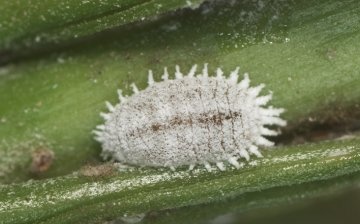

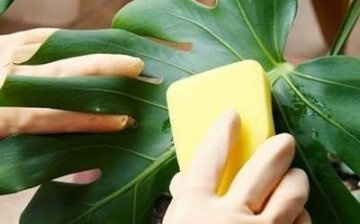
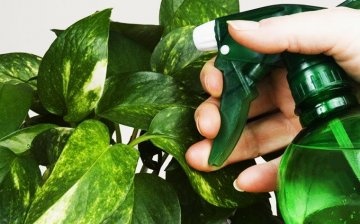
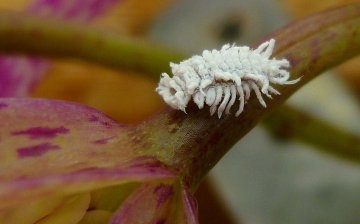







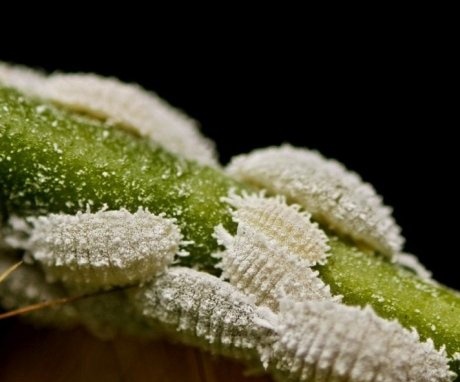

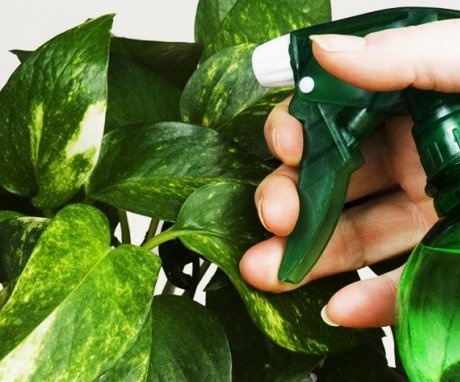
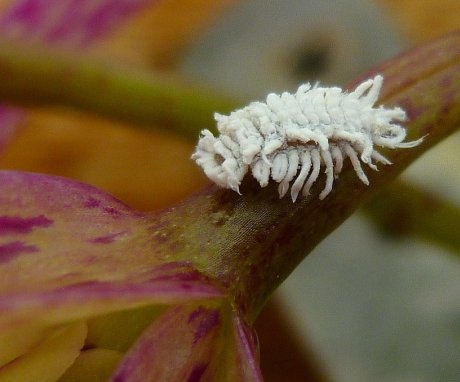

We recently lost two ficuses, for what reason - this happened, I did not understand. We also grow cacti and orchids in pots. Tomorrow I'll check, maybe it's all about this mealybug?
Thank you for the useful advice, especially the popular ones, in the fight against this pest. One of my ficuses is showing signs of a worm-like disease. I will try to use a tincture of calendula.